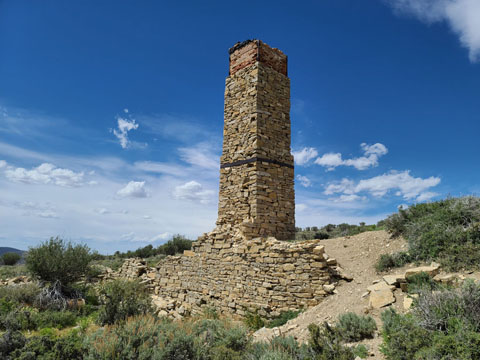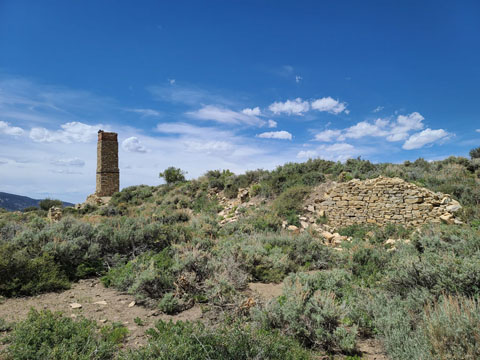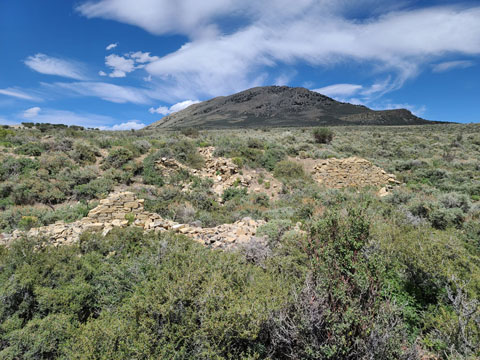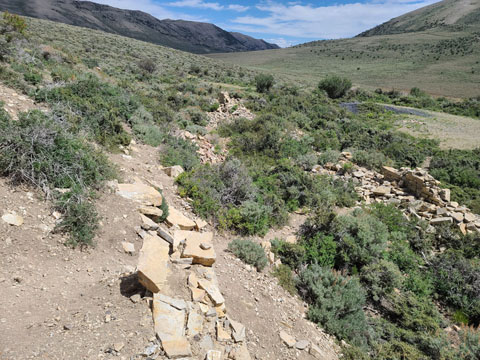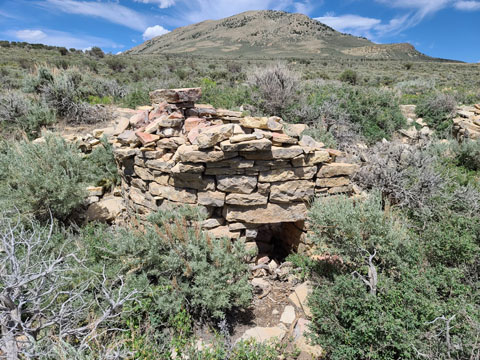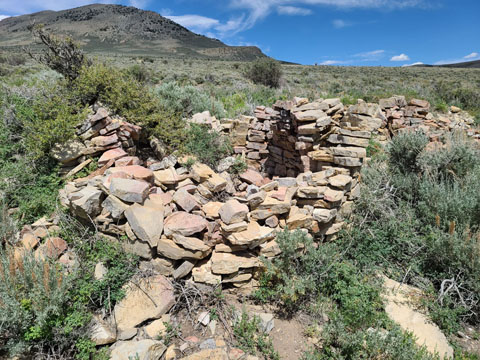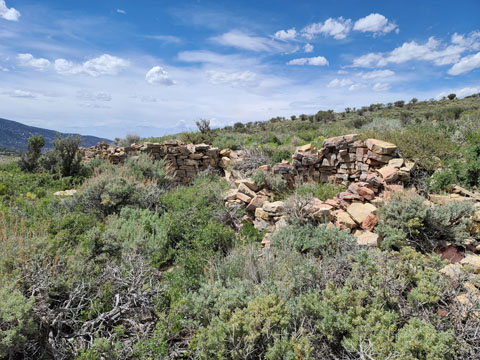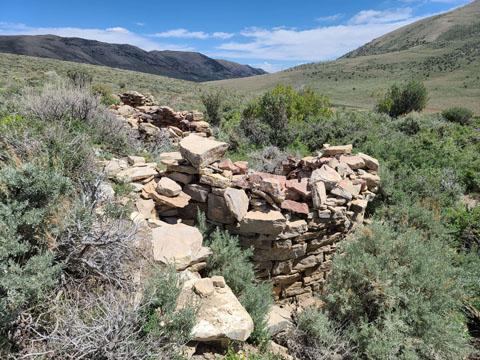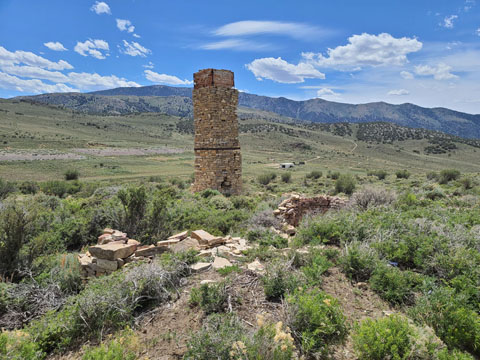Hamilton
The first silver was discovered on Treasure Hill in late 1867, and the White Pine District was born. A camp dubbed Cave City developed, named from caves in the surrounding hills where initial arrivals camped. In May 1868, a townsite was laid out and named Hamilton after one of its developers. Within the next month, the town had a population of thirty and a single saloon. Soon, subsequent rich discoveries at Treasure City initiated a rush to the White Pine District. By the end of the year, Hamilton was home to 600 and had four saloons, a restaurant, and a rooming house.
The biggest boom began at the end of winter, and by spring 1869 some 10,000 lived in and around Hamilton. Stage lines ran to Elko and Austin, and in March Hamilton was selected as the county seat of newly-created White Pine County. A brick courthouse costing $55,000 was erected, accompanied by construction of numerous businesses including stores, saloons and breweries, theaters, dance halls, and fraternal halls. With growth anticipated to surpass 50,000, the White Pine Water Company was organized to supply water to town, completed in August (though it was short-lived, as the population never exploded as expected). By the end of the year, a handful of mills were in operation to treat the ore recovered on Treasure Hill, complemented by a number of mills at nearby Shermantown.
In 1870, speculation as well as a decline in mining on Treasure Hill brought a depression to Hamilton, and that year the town's population shrank to only 3,915. A disastrous fire on June 27, 1873 destroyed much of Hamilton's business district and caused $600,000 in damage. By the end of that year, the population was only 500. A subsequent fire in 1885 destroyed the courthouse, and prompted the county seat's move to Ely in 1887. Nevertheless, Hamilton maintained an extremely small population into the first decades of the 20th century to support leasing work on Treasure Hill. By 1931, the town's population was too small to support the post office, and it closed.
Several buildings stood in various states of decay for many years, most notably the stone facade of the J.B. Withington Hotel stood until it was felled by an earthquake. A revival in the 1980s brought new mining construction to Hamilton, though care was taken to protect the ruins.






































